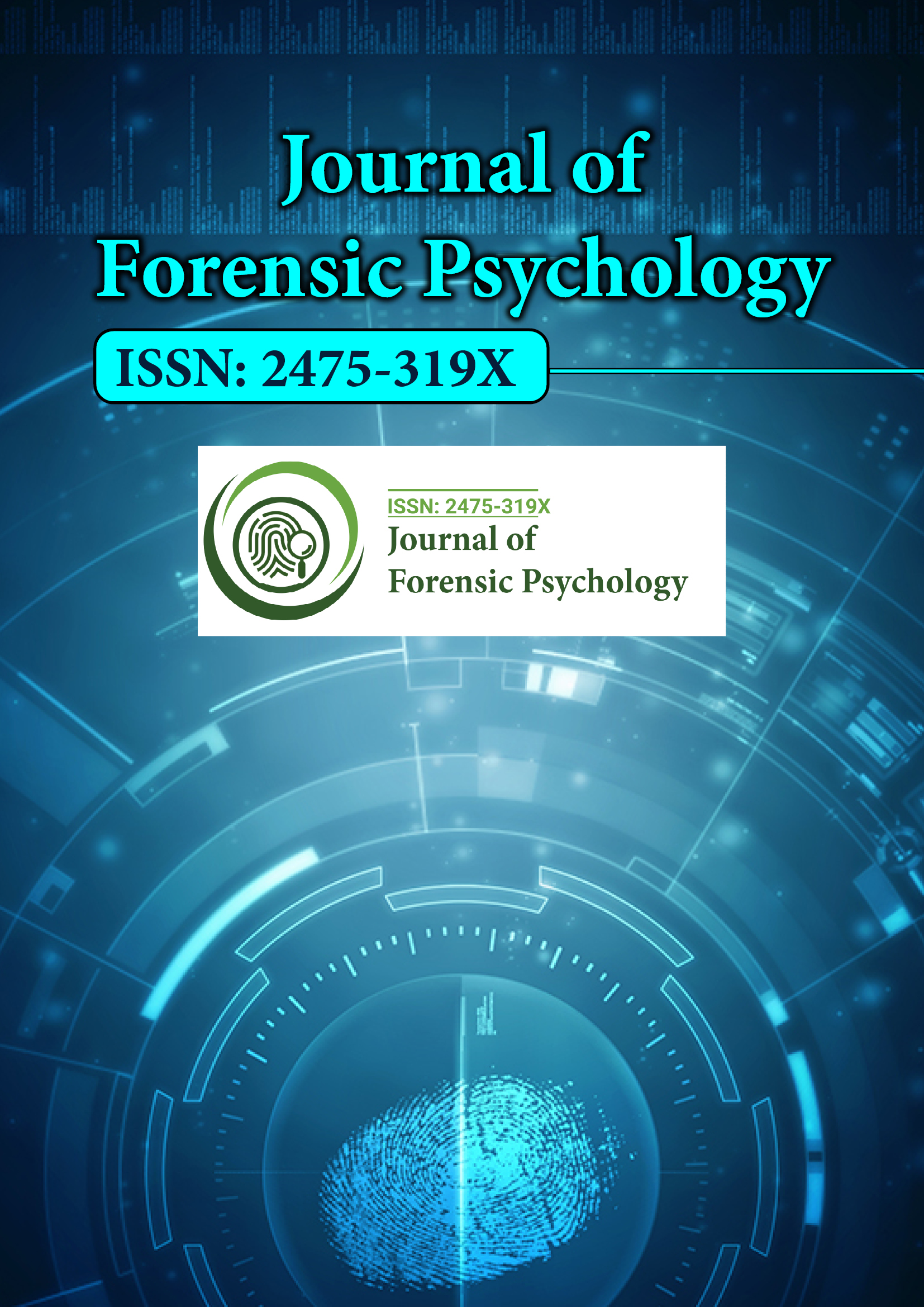Indexed In
- RefSeek
- Hamdard University
- EBSCO A-Z
- Publons
- Geneva Foundation for Medical Education and Research
- Euro Pub
- Google Scholar
Useful Links
Share This Page
Journal Flyer

Open Access Journals
- Agri and Aquaculture
- Biochemistry
- Bioinformatics & Systems Biology
- Business & Management
- Chemistry
- Clinical Sciences
- Engineering
- Food & Nutrition
- General Science
- Genetics & Molecular Biology
- Immunology & Microbiology
- Medical Sciences
- Neuroscience & Psychology
- Nursing & Health Care
- Pharmaceutical Sciences
Commentary - (2022) Volume 7, Issue 4
Clinical Application of QEEG
Received: 31-Mar-2022, Manuscript No. JFPY-22-16455; Editor assigned: 05-Apr-2022, Pre QC No. JFPY-22-16455(PQ); Reviewed: 21-Apr-2022, QC No. JFPY-22-16455; Revised: 28-Apr-2022, Manuscript No. JFPY-22-16455(R); Published: 04-May-2022, DOI: 10.35248/2475-319X.22.7.222
Description
Quantitative Electroencephalography (QEEG) is a modern type of Electroencephalography (EEG) study that includes recording digital EEG signals which are processed, transformed, and analyzed using complex mathematical algorithms. The clinical application of QEEG is wide, involving neuropsychiatric disorders, epilepsy, stroke, dementia, traumatic brain injury, mental health disorders, and many others. The role of QEEG is not essentially to pinpoint an instant diagnosis but to provide extra vision in conjunction with other analytic evaluations in order to objective information necessary for obtaining a detailed diagnosis, accurate disease severity assessment, and particular treatment response evaluation.
Neuropsychiatric disorders.
The American Clinical Neurophysiology Society (ACNS) and the American Academy of Neurology (AAN) state that QEEG may be complementary to conventional EEG in the following conditions: screening of likely epileptic peaks, screening of epileptic seizures in patients at risk that are admitted to an Intensive Care Unit (ICU), pre-surgical charge in drug-resistant epilepsy, finding of acute intraoperative intracranial complications, evaluation of patients with cerebrovascular disease symptomatology, severity assessment of dementia and encephalopathies and ambulatory EEG. On the other hand, in investigational studies without evidence in clinical practice, QEEG is used for the conditions of post-concussion syndrome, mild or moderate traumatic brain injury, attention deficit disorder, schizophrenia, depression, alcoholism, and tinnitus for checking the therapeutic response to psychotropic drugs.
Epilepsy
The EEG is an assessment tool in epilepsy. Although QEEG does not have the equal widespread use as EEG, it can offer a fast diagnosis of epileptic seizures and also differential analysis between different subtypes. Thus, in their study, the sensitivity of QEEG spectrograms in seizure diagnosis was between 43% and 72%, and the asymmetry was connected with crucial seizures in 117 out of 125 patients with compassion of 94%. Another part of QEEG in epilepsy is to evaluate the response to antiepileptic therapy by pharmaco-EEG studies.
Considering that Cognitive Impairment (CI) may occur in 70%-80% of patients with epilepsy, CI evaluation through QEEG parameters could contribute to a better understanding of the pathophysiology of altered cognitive activity in epilepsy.
Stroke
Patients, who are suffering from stroke commonly present with typical cerebral rhythms abnormalities. QEEG in identifying or observing stroke abnormalities was first used in 1984, and the most remarkable result was that the θ/β ratio expressively increased in the damaged hemisphere. α relative power was reduced both in the damaged and normal hemisphere, and poststroke retrieval may be assessed using this pattern. Frontal α activity is associated with the functional outcome and progression of cognitive impairment because it may be an index of attentional capacity post-stroke. The δ/α ratio (DAR) and α asymmetry index were also increased. Recent studies suggested the utility of a ‘lower-density’ EEG electrode montage: just four frontal electrodes: F3, F7, F4, and F8 for assessing the diagnosis and monitoring in stroke.
Traumatic Brain Injury (TBI)
Advanced neuroimaging methods have contributed to an improved understanding of neuropathological mechanisms in TBI. Neuroimaging through Diffusion Tensor Imaging (DTI) has tinted changes in useful connectivity between brain regions:sign of white matter integrity loss in TBI. Instead, by of using Magnetic Resonance Spectroscopy (MRS), abnormalities of the cerebral metabolism have been shown as an importance of TBI. These molecular changes, noticeable on DTI and MRS, affect the generation, transmission, and processing of neural indications within and between brain regions. Furthermore, studies have suggested a high correlation between DTI/MRS changes and abnormalities in cerebral electrical movement, suggesting the usefulness of EEG in evaluating functional cerebral impairment.
Conclusion
QEEG signifies a critical tool to advance clinical diagnosis and treatment response evaluation. Furthermore, several QEEG devices have been accepted by the US Food and Drug Administration (FDA) for the post-hoc study of the digital EEG and are classified as Class II devices. The causes of polemics in QEEG research are the absence of methodology in managing the wide database created by EEG recordings. Each specialist has its statistical analysis tools, inter- and intra-individual variability – the EEG is influenced by a number of biological factors.
Citation: Boutwell C (2022) Clinical Applications of QEEG. J Foren Psy. 7:222.
Copyright: © 2022 Boutwell C. This is an open-access article distributed under the terms of the Creative Commons Attribution License, which permits unrestricted use, distribution, and reproduction in any medium, provided the original author and source are credited.

